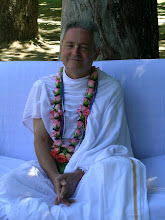
In the Fedone, Platone makes Socrate say, in one of his last phrases: “The time has come that I must go; every one of us continues with his or her program: I go off to die, you all go on to live, but no one knows who will be better off, only God knows”. And Tagore wrote: “Birth and death are two parts of life, just like to walk you must lift a foot and then lay it down”.
Birth and death are two dots in a circle that the sages of the Veda call samsara, the repeated cycle of birth and death, since, like the Bhagavad gita teaches, all that is born will die and all that dies will be reborn.
Birth and death are like awakening and going to sleep: we are here before we awake and we are here again after we have fallen asleep. The similitude between dream and death is very close.
The fear of death, besides the terror generated from the unknown, from the journey to an unknown destination, is primarily constituted from the fact that we must leave the objective world, the body, our dearest people, the social position, the prestige, the richness, the pleasure of food, of sex and various possessions. Yet, doesn’t the same happen during our dreams? In the dream doesn’t the subject abandon its physical body? Doesn’t he abandon the social prestige? He abandons a large quantity of things for which he has often developed a morbid attachment. The realization of the self permanence in a different dimension from the one of the wake state of consciousness, is something to be reinforced when we have the resources to make an investment of knowledge, to resolve the problem of death in life.
Death, as the Veda teache, is a passage towards another dimension, passage through which we renew our lives’ projects; it is not the end, but the beginning of a successive existential cycle. It is like exiting from a theatre scene and entering into another; the actor does not disappear, he is gone only to the observer’s eyes; the same is for the living being at the death moment: the protagonist does not disappear, but simply goes elsewhere. The Gita compares the body to a dress; death is like undressing from old clothes and wearing new ones.
Our prejudices, the social schemes, the way of facing certain phenomena and certain passages of life, are to be reconsidered at the renovated light of intelligence. The image of the self is not what the mirror shows. Death can lose its dramatic power if we come to a new vision of reality, by acknowledging and experiencing ourselves beyond the multiple masks of ego.
The fear of being annulled, zeroed, terminated, is the product of a certain culture, a prejudice, a negative dogma that generates tormenting thoughts, swinging between remorse and irony. Many make irony on death trying to exorcise their fear, but the right approach to the phenomenon must be honest, serious, through an in-depth study, not only intellectual, but experimental.
The subjective world and the objective world, the psychical introverted and extroverted functions and the needs of all the living being should be harmonized. It is by harmonizing these functions that we can grow up, that we can illuminate our personality. Life is a continuum, birth and death correspond to the appearing and disappearing of a physical body, and the same is for the appearing and disappearing of thoughts, illusions, wishes, opinions. If emotionally detached we put ourselves in the position of observers, we can see that the psychical contents float in our conscience as objects on the surface of a river, and therefore we can manage them at our best. What slips off our control, instead, is all that we identify ourselves with and obviously what we ignore.
The fear of death is caused by the identification with our body. Who identifies himself/herself with the body they are wearing will experiment, as years go by, growing fear and terror of death.
What wins death is love, together with consciousness. Love is the strongest feeling, it outlives death, because living means to give and receive love. To love in its widest meaning is to love life itself, therefore all that is living: all creatures. This should set our way of life, of eating, of relating with others. The more we love life and we understand its nature, the less we will fear death.




